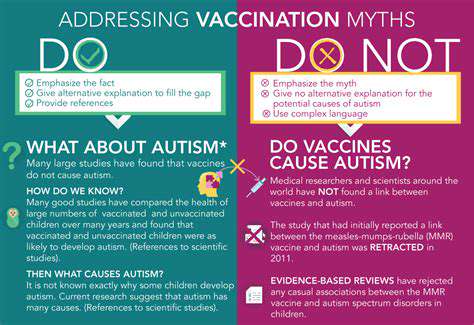Guide to Training Your Dog Off Leash
Understanding Gradual Exposure
Gradual exposure forms the bedrock of positive reinforcement training for dogs, particularly when introducing novel concepts like freedom. This method entails carefully and incrementally introducing your dog to situations and environments that might initially provoke anxiety or fear. By taking this measured approach, your dog can develop confidence and learn that these perceived threats aren't actually dangerous, leading to a more relaxed and self-assured companion. Rushing this process can backfire, creating negative associations that may exacerbate existing anxieties.
The secret lies in beginning with minimal exposure, preferably in familiar settings. For instance, if you want to grant your dog more freedom in a specific area, start by letting them investigate just a small portion of that space while leashed, or merely a few feet from you. Slowly expand both the space and duration of exploration, constantly observing their reactions to ensure they remain comfortable. This step-by-step method helps forge positive connections with new experiences, giving your dog a sense of security and control.
Implementing Gradual Exposure for Freedom
When applying gradual exposure to introduce freedom, first pinpoint the exact situations or locations where you want to give your dog more liberty. This could be a room in your home, a fenced yard, or even a new park. Start by permitting your dog to explore a confined area while leashed, closely watching their body language. If they display signs of stress, promptly remove them and try again later with a shorter session. Have rewards like treats, verbal praise, and favorite toys ready to reinforce calm, confident behavior.
As your dog shows comfort, progressively increase the space and duration of off-leash time while maintaining supervision. Positive reinforcement remains crucial throughout this process, making each experience rewarding and enjoyable. Consistency and patience are vital - developing a calm, confident dog doesn't happen overnight. Celebrate every small success along the way.
Equally important is recognizing your dog's unique personality and limits. Some dogs adapt quickly while others need more time. Adjust your approach based on your dog's responses to prevent overwhelming them. Understand that some dogs may never become completely comfortable in certain situations, and that's perfectly acceptable. The objective is helping them manage their anxiety effectively rather than expecting complete fearlessness.
Through gradual exposure, you create a supportive environment for your dog to explore newfound freedom. This method builds confidence while reducing anxiety, strengthening your bond. This approach proves especially valuable when introducing off-leash time or greater home freedom. Always prioritize your dog's comfort and wellbeing above all else.
Managing Distractions: A Key to Off-Leash Proficiency

Understanding the Nature of Distractions
Distractions permeate our modern environment, constantly competing for attention. They appear in countless forms, from digital notifications to background conversations. Recognizing these varied sources represents the first step toward effective management. True distraction management requires acknowledging both external stimuli and internal thoughts or worries, allowing for a more holistic approach.
Pinpointing your specific distraction triggers is essential for developing effective counterstrategies. This demands honest self-assessment about your personal tendencies. Do visual elements, sounds, or internal concerns most frequently interrupt your focus? Identifying these triggers creates a foundation for meaningful improvement.
Creating a Distraction-Free Environment
Your physical surroundings significantly impact concentration levels. Clutter, noise, and unnecessary items can all contribute to divided attention. Designating a clean, organized workspace free from visual chaos and auditory disturbances can dramatically enhance focus.
Proactively reducing interruptions makes a substantial difference. This includes silencing device notifications, closing irrelevant browser tabs, and communicating your need for uninterrupted time to others. Noise-canceling headphones or earplugs can effectively minimize disruptive sounds when necessary.
Developing Effective Time Management Strategies
Effective time management and distraction control go hand-in-hand. Feeling overwhelmed often leads to increased distractibility. Breaking large projects into smaller tasks, setting achievable deadlines, and planning your workflow can help maintain direction and prevent that overwhelmed feeling.
Implementing time blocking - assigning specific periods for particular tasks - can significantly boost productivity. This structured approach reserves dedicated time for deep work, reducing opportunities for distractions to take hold.
Utilizing Focus Techniques
Numerous concentration methods exist to combat distractions. The Pomodoro Technique, which alternates focused work sessions with short breaks, helps sustain attention while preventing mental fatigue.
Mindfulness practices like meditation or controlled breathing exercises prove remarkably effective for managing internal distractions and achieving mental clarity. Regular practice develops awareness of thoughts and emotions, enabling you to acknowledge them without losing focus.
The Role of Self-Care in Managing Distractions
Often neglected in productivity discussions, self-care fundamentally impacts distraction management. Proper sleep, nutrition, and physical activity all contribute to mental sharpness and stress reduction - major factors in distractibility.
A well-rested, properly nourished brain operates at peak efficiency, demonstrating greater focus capacity and resilience against distractions. Never underestimate the power of basic self-care in maintaining concentration.
Building Mental Resilience to Distractions
Developing mental toughness is crucial for thriving in distraction-filled environments. This involves cultivating self-discipline and the ability to resist impulsive responses to distractions.
Learning to recognize and regulate your emotional reactions to distractions forms a critical component of this development. Understanding how emotions affect focus allows you to create strategies that minimize their disruptive potential.
Troubleshooting Common Issues and Maintaining Focus
Understanding Common Distractions
Dogs experience distractions much like humans do, responding to visual, auditory, and olfactory stimuli. Identifying these distractions is essential for training success. Whether it's a darting squirrel, car horn, or tempting food smells, these can all interrupt training. Recognizing these triggers enables you to address them proactively, creating better focus conditions for your dog.
Careful observation during training sessions provides valuable insights. Note what captures your dog's attention and how they react. This knowledge helps develop strategies to minimize distraction impact while reinforcing desired behaviors.
Managing Excitement and Impulse Control
Puppies and adolescent dogs often exhibit boundless energy and impulsive actions. An overexcited dog may find it difficult to concentrate on commands, displaying behaviors like jumping, barking, or excessive tail-wagging that disrupt learning. Teaching impulse control through consistent training and positive reinforcement is crucial for developing focus.
Techniques like settle commands and rewarding calm behavior help manage these impulses. Patience and consistency are paramount when teaching your dog to regulate excitement and maintain attention.
Addressing Training Resistance
Dogs may resist training for various reasons, including confusion or lack of motivation. Determining the root cause is essential for effective problem-solving. Is your dog struggling to understand? Feeling overwhelmed? Or simply unmotivated? Identifying the underlying issue guides appropriate solutions.
Effective Reinforcement Strategies
Positive reinforcement serves as the foundation of successful dog training, rewarding desired behaviors with treats, praise, or play. Maintaining a consistent reinforcement schedule helps your dog connect actions with positive outcomes. Timing is critical - immediate rewards following desired behavior prove far more effective than delayed reinforcement.
Varying reward types - from high-value treats to enthusiastic praise - keeps training sessions engaging and maintains your dog's motivation to participate.
Consistent Training Environment and Routine
A stable, predictable training environment minimizes distractions and strengthens the association between training and positive results. Select a specific training location with minimal external stimuli and maintain a calm atmosphere. Dogs thrive on routine, so establishing consistent daily training times can significantly enhance results.
Avoid sudden environmental or routine changes during training. This consistency reinforces the connection between training activities and their positive outcomes.
Troubleshooting Specific Training Issues
For persistent issues like poor recall or leash reactivity, consulting a professional dog trainer can provide invaluable assistance. A certified trainer can assess your dog's unique needs and develop customized solutions. Don't hesitate to seek expert help when facing particular training challenges - their specialized knowledge often yields effective strategies for specific problems.
Remember that troubleshooting and maintaining focus in dog training represents an ongoing journey. Continuous learning and adaptation ensure your dog's progress and overall wellbeing.
Read more about Guide to Training Your Dog Off Leash
Hot Recommendations
- Review: [Specific Brand] Small Animal Cage
- Why Rescuing Pets Saves Lives
- Best Pet First Aid Kits [What to Include]
- How to Help Stray Animals in Your Community
- Guide to Adopting a Pet When You Have Kids
- Top Reptile Heat Lamps
- Heartwarming Rescue Stories That Will Inspire You
- Review: [Specific Brand] Bird Cage
- Best Aquarium Filters [2025 Review]
- Review: [Specific Brand] Smart Litter Box











